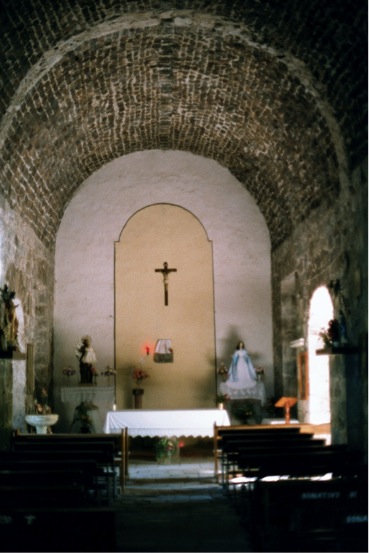
By David Kier
Co-author of ‘The Old Missions of Baja & Alta California, 1697-1834’
The fifth California mission was founded by the Jesuit Padre Julián de Mayorga about 30 miles northwest of Loreto and on a stream that flowed west to the Pacific Ocean. The new mission name was a combination of the Indian name for the site (Comondú) and the Spanish name given to it by Padre Juan María de Salvatierra, Loreto’s founder (San José de la Giganta).
The first church was small and made of adobe blocks. Padre Mayorga hoped to construct a larger church, but a smallpox epidemic delayed its construction. Stone masons were not available so the larger church was also made of adobe. It was built on a stone foundation (that can be seen today) and was completed in October, 1716. The new church and attached storeroom walls were nearly 70 feet long by 21 feet wide and 10 feet tall. The walls were 3 feet thick, so the interior width was only 15 feet.
Two mission visiting stations or ‘visitas’ were transferred to the jurisdiction of Comondú, from Loreto. They were San Juan Londó and San Ignacio (not the 1728 Mission San Ignacio site). The visita of San Ignacio was 20 difficult miles south of San José de Comondú. The San Ignacio visita was such a productive source for food that Padre Mayorga took frequent trips there to help develop it further. Just two more miles south was another visita developed for Mission San Javier, called San Miguel. Together, San Miguel and San Ignacio provided more food than many peninsula missions could.
The Jesuits assigned Padre Guillermo Gordon from 1734 to 1737 to the San Miguel visita to relieve both Padre Mayorga of Comondú and Padre Agustín María de Luyando of San Javier. Some authors have listed San Miguel as a separate mission because of this, but Jesuit records seem clear it was never a separate mission. The location is now known as San Miguel Comondú.
Padre Julián de Mayorga had been not well for some time and 28 years after he founded San José de Comondú he died on November 10, 1736. The Jesuits must have been anticipating that day, because they decided to move Mayorga’s mission to the visita of San Ignacio just a couple of weeks later. Some books say the mission first moved to San Miguel for a year while San Ignacio was being prepared. The mission name stayed unchanged with the move, and so the name San Ignacio was eliminated once it became the new mission site. The loss of their padre and then the sudden move from their homeland caused great strife with the Comondú neophytes. The original mission location was renamed Comondú Viejo and is today located between the ranches of San Juan and La Presa.
A massive cut stone church complex at the new location was constructed during the years 1754 to 1760, even though epidemics were killing off the population the church was built to attract and serve. What was the largest mission church in California fell into ruin, and was demolished in 1936. A side chapel to the mission church was preserved and is what stands today in the town of San José Comondú. San José Comondú can be reached by paved road from the south, or by rough roads from the east and north.





LOOKING FOR COMONDU.